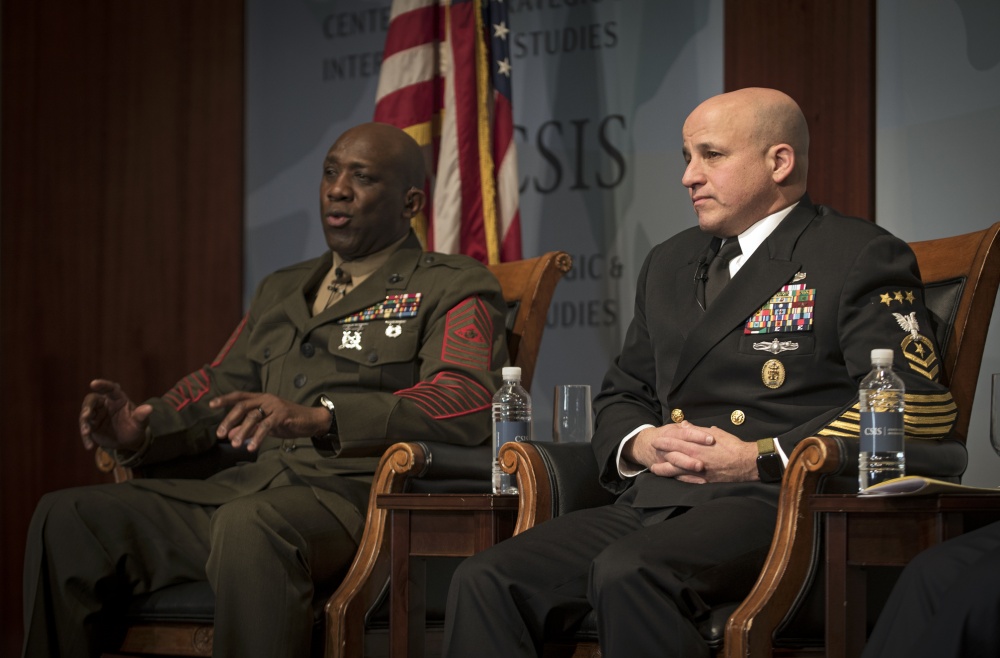
WASHINGTON, D.C. – The Navy and Marine Corps’ top non-commissioned officers say finding affordable childcare is critical to personnel retention.
Readiness and lethality are the Navy’s and Marine Corps’ primary concerns, but when sailors and Marines worry about finding safe and affordable childcare options, the distraction can become critical, Master Chief Petty Officer of the Navy (MCPON) Russell Smith said on Thursday.
Smith and his Marine counterpart, Sergeant Major of the Marine Corps (SMMC) Ronald Green, spoke about challenges facing enlisted personnel during the U.S. Naval Institute-hosted Maritime Security Dialogue at the Center for Strategic and International Studies.
“A lot of people have tried to bin this and call it a woman’s issues. It’s not,” Smith said. “We have single fathers, single mothers, dual-income, dual-working couples. It’s a family issue.”
Green agreed with Smith, adding that the demographics of the service have changed even in the time since they joined the Marine Corps and Navy.
“Childcare is a challenge in a service where 49, 50 percent [of personnel] are married; far more than when the MCPON and I came in in the ’80s,” Green said.
The Navy and Marine Corps leadership understand childcare can be a contributing reason why individuals choose to leave the service. The Navy Installations Command is working to develop several options for families, Smith said. However, providing quality childcare is expensive, especially when trying to provide care in remote locations or densely populated regions.
“In order to keep 24-hour seven [days-a-week] flight line operations working in a place like [Naval Air Station] Lemoore, Calif., I have to figure out how to provide childcare that’s affordable,” Smith said. “That’s really becoming the big conundrum for us.”
Funding levels have been unpredictable for more than a dozen years, Green said. The Department of Defense has had to deal with funding caps put in place by the 2011 Budget Control Act and funding levels held to the previous year’s toplines when Congress passes temporary continuing resolutions instead of actual spending bills at the start of new fiscal years.
Whatever the funding situation in a fiscal year happens to be, the mission doesn’t change and what funding is available is first steered to maintaining readiness and lethality, Green said.
“You’re going to put money toward being ready and being lethal,” Green said. “When you have to take funds from other places, it normally comes from infrastructure sustainment, research and development, the programs that support families. Because we must be prepared to fight. We must do that.”





